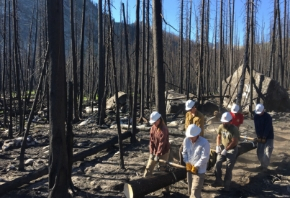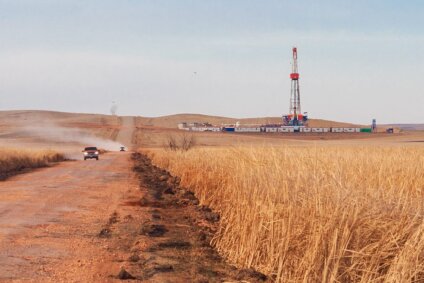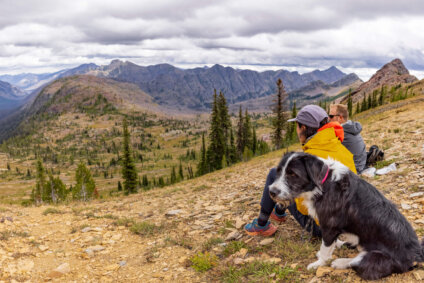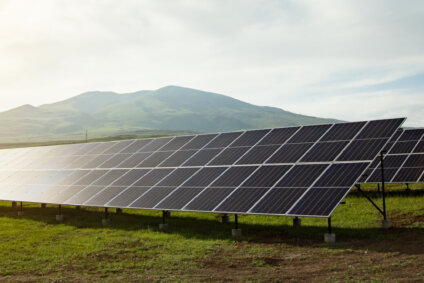How Do You Fix a Trail After a Wildfire?
Maintaining trails after fire provides access for all and benefits local communities
When the smoke eventually clears from this season’s wildfires and every last ember expires under a much-needed autumn rain, Montana Wilderness Association will set to work evaluating trails affected by the 2018 wildfires and making plans to keep those trails open to all Montanans. That’s because MWA is serious about addressing the challenges of wildfire and doing our part to find solutions. With this goal in mind, we’ve been playing an increasingly important role in wildfire recovery by focusing on trail restoration.
This summer, MWA’s Volunteer Trail Crew worked on five distinct trail projects across the state that were geared toward the rehabilitation of trail damage as result of last year’s fire season. In June, we partnered with several volunteers from Backcountry Hunters and Anglers on the Kootenai National Forest to re-open the Moose Peak trail in the southern Cabinet Mountains. The month of June also found MWA volunteers partnering with the Continental Divide Trail Coalition in a joint effort to restore portions of historic Lewis and Clark Pass just north of Lincoln that were affected by the 2017 Alice Creek fire.
During the heat of July and August, we spent two weeks in the heart of the Anaconda-Pintler Wilderness addressing trail damage associated with the 2017 Meyers Fire, opening seven miles of the Continental Divide Trail to legions of thru-hikers from across the country. In September, we will be meeting new trail needs following the 2017 Rice Ridge fire at the southern edge of the Scapegoat Wilderness on the Seeley Lake Ranger District.

The crew removing a log from the Hi-Line Trail in the Anaconda-Pintler Wilderness (photo by Sonny Mazzullo)
Many folks unfamiliar with trail work might be wondering, “What sort of work is needed on trails after a wildfire and why is that work so important?”
When our Volunteer Trail Crew tackles a fire rehab project, the first order of business involves removing blow-downs from the trail corridor. Fire-scorched trees with compromised root systems tend to topple during a wildfire due to increased localized winds. This can make it very challenging for hikers and those on horseback to get down the trail. Walking or riding around sections of blow creates a new “social” trail, which will only increase erosion on the main trail. By clearing blow down, we’re making the hike or ride more effortless and enjoyable and keeping all users on the same clear path through the woods to reduce the impact on the land.
Once the deadfall is removed, there are tread and erosion control measures to address on the trail. “Tread” is the trail builder’s term for the trail itself – the hardened surface that hikers walk on. Tread, as all hikers and horsemen know, is frequently studded with roots. During a fire, many of those roots are incinerated, leaving hazardous holes in the tread. Those holes need to be filled and the tread re-built.
Wildfire also removes the vegetation surrounding tread. Grasses and shrubbery, particularly on the uphill side of a trail, collect water from snowmelt and storms before it hits the tread. When vegetation vanishes during a fire, erosion quickens and the upper slope typically collapses onto the trail. This sloughed earth then needs to be “re-treaded” by our volunteer trail workers in order to reestablish a sustainable and smooth trail.
Erosion control structures are an important part of this work. A post-fire trail without erosion control structures will soon turn into a trench or even, in extreme cases, a cavernous gully where the sides of the trail brush against your knees or even the belly of your horse! We’ve all passed over erosion control structures on trails, though we might not have known it at the time or given much thought to their intended purpose. These structures have more specific industry names like water-bars and check-dams, and are constructed by the trail crew with native rock or wood and stop erosion by diverting water off the trail.
Now that you’re well-versed in what work needs to be accomplished on trails after a wildfire rolls through, it’s important to understand how that work is accomplished. Keep in mind that a large portion of our volunteer project work takes place in designated Wilderness, where only non-motorized tools are permitted. That means deadfall is removed with crosscut saws that are powered by muscle, re-tread is shaped by sweat-stained picks and pulaskis, and structures are installed with shovels and determination. Wilderness trail work is a throwback to a time before mechanization, and that’s why we’re so grateful to our volunteers for rising to the challenge.

Crosscutting blowdown to open up the Hi-Line (photo by Sonny Mazzullo)
We’re also grateful to our partners, especially the U.S. Forest Service and Montana Fish, Wildlife, and Parks. Through federal and state grant agreements, MWA is able to match tax dollars with private donations and then multiply the impact of each dollar by recruiting volunteer labor to execute projects that ultimately help maintain access to public lands for all Montanans. For example, in 2017, MWA contributed nearly $42,000 in volunteer labor on trail projects in the state, improved 26 miles of trail, and fully re-treaded 4.6 miles, keeping our public lands open and accessible.
Trails are the entry point to our public lands. Regaining access to trails damaged by wildfire is a necessary and meaningful contribution to Montana communities when recovering from wildfire. The health and vitality of our trail systems are crucial in maintaining not only our way of life, but Montana’s $7 billion outdoor recreation economy as well.
The sweat-stained clothes and soot-charred cheeks of our trail crew volunteers are a reminder that the challenges of repairing trails after wildfire are daunting, but the miles of new and improved trail are a valuable reward. We’re proud of our work to address the challenges of keeping our tails open and well maintained, and we’re looking forward to deepening our investment in this work moving forward.
– Matt Bowser, MWA stewardship director

Stay Connected
"(Required)" indicates required fields


